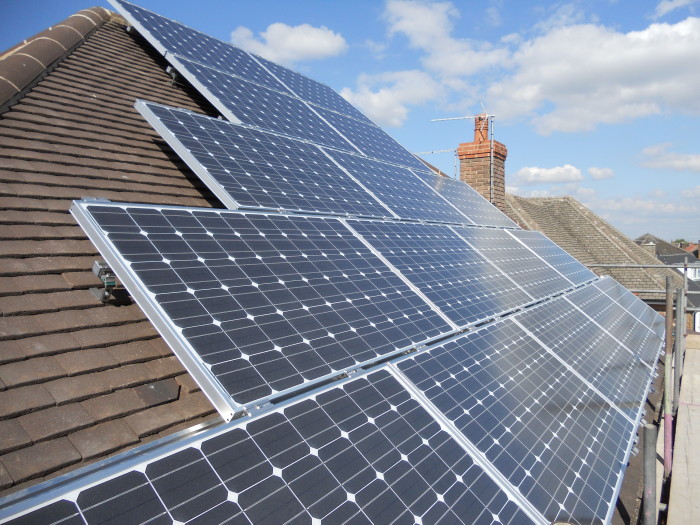High-efficiency solar panels are designed to convert sunlight into electricity with a greater efficiency compared to standard solar panels.
- Conversion Efficiency:
- High-efficiency solar panels have a greater ability to convert sunlight into electricity. The efficiency is typically measured as a percentage of sunlight converted into electricity. Common types of high-efficiency solar panels include monocrystalline and polycrystalline solar panels with efficiencies exceeding 20%.
- Monocrystalline Silicon Cells:
- Monocrystalline solar cells are known for their high efficiency. These cells are made from a single crystal structure, which allows for better electron flow. Monocrystalline solar panels often have a higher efficiency compared to polycrystalline and thin-film alternatives.
- Passivated Emitter Rear Cell (PERC) Technology:
- PERC technology involves adding a passivation layer on the rear side of solar cells, reducing electron recombination and improving overall efficiency. This technology is commonly used in high-efficiency solar panels.
- Back-Contact Solar Cells:
- Back-contact solar cells eliminate the front metal grid, which can block sunlight. This design allows more sunlight to reach the solar cell, increasing efficiency. SunPower’s Maxeon solar cells are an example of back-contact technology.
- Tandem Solar Cells:
- Tandem solar cells stack multiple layers of solar cell materials on top of each other. Each layer absorbs a different part of the solar spectrum, increasing overall efficiency. This technology is often used in multi-junction solar cells.
- Anti-Reflective Coatings:
- High-efficiency solar panels may use anti-reflective coatings on the front surface to reduce the amount of sunlight that is reflected away. This allows more light to be absorbed by the solar cells, improving overall efficiency.
- Selective Emitter Technology:
- Selective emitter technology involves creating areas of different doping concentrations on the solar cell surface. This enhances the collection of charge carriers, leading to increased efficiency.
- High-Quality Materials:
- The use of high-quality materials in manufacturing, such as high-purity silicon, ensures better performance and longevity of the solar panels.
- Efficient Tracking Systems:
- In some cases, high-efficiency solar panels are used in conjunction with solar tracking systems that follow the sun’s path throughout the day. This maximizes the amount of sunlight the panels receive, further improving overall efficiency.
- Improved Temperature Coefficients:
- High-efficiency solar panels often have better temperature coefficients, meaning their performance is less affected by high temperatures, which can degrade the efficiency of solar cells.
It’s important to note that while high-efficiency solar panels may have a higher upfront cost, their increased efficiency can result in a faster return on investment over the lifespan of the solar panel system.


